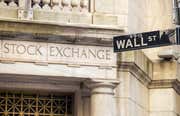The Conference Board publishes the Consumer Confidence Index at 10:00 AM EST on the last Tuesday of each month. Technical notes and subscription information are available on the Conference Board’s website.
The CCI is a unique indicator, formed from survey results of more than 5,000 households and designed to gauge the relative financial health, spending power and confidence of the average consumer.
There are other sentiment indicators that can sometimes be confused with the Consumer Confidence Index, or used in conjunction with it, such as the University of Michigan Sentiment Report, and some investors will try to average the two reports to get their own sense of consumer sentiment. (For background reading, see Understanding The Consumer Confidence Index and Consumer Confidence: A Killer Statistic.)
The Conference Board is a global, independent research organization working in the public interest. Their stated goal is to provide the world’s leading organizations with the practical knowledge that they need to improve their performance and to benefit society.
What the CCI tells us
The CCI surveys households’ plans to make major purchases and their overall current and expected economic condition. The answers are compared to the survey baseline to get a trend, either positive or negative.
Survey questions cover five categories:
- Current business conditions and employment levels
- Expectation for business conditions and employment over the next six months
- Households’ plans to make major purchases such as autos, appliances and homes over the next six months
- Households’ vacation plans over the next six months
- Expectations regarding interest rates, stock prices and inflation over the next six months
The index is calculated by comparing the level of positive responses to the benchmark values based upon the initial survey taken in 1985. Responses are grouped by age, household income and geographic region. The average value of all five categories determine the value of the overall index.
The CCI is regarded as a measurement of the optimism, or lack thereof, that consumers feel about the economy and their own situation. The theory is that the more optimistic consumers feel, the more they may be inclined to spend. An upturn in the index can be an indicator of more jobs, higher wages, an increased demand for capital and possibly higher inflation.A downturn in the index can be an indication of the opposite.
The CCI is a lagging indicator in that it measures consumer responses to things that have already impacted them. Analysts and investors can use it to verify what they already suspect about the economy from the point of view of the consumer.
Because of its subjective nature and relatively small sample size, most economists will look at moving averages of between three and six months for consumer confidence figures before predicting a major shift in sentiment; some also feel that index level changes of at least five points are necessary before calling for the reversal of an existing trend. In general, however, rising consumer confidence will trend in line with rising retail sales and, personal consumption and expenditures, consumer-driven indicators that relate to spending patterns.
Economic Indicators: Consumer Credit Report
-
 Investing
InvestingTiming Trades With the Commodity Channel Index
We introduce how to use the Commodity Channel Index, an oscillator that identifies cyclical trends, to determine buy and sell points. -
 Insights
InsightsWhy Consumer Confidence Matters
As consumer spending is a dominant component of the U.S. economy, how consumers feel about the economy can become self-fulfilling. -
 Insights
InsightsHow To Read The Michigan Consumer Sentiment Index
The Michigan Consumer Sentiment Index has provided a key leading indicator for investors and economists for decades. This respected index is published monthly from the results of random telephone ... -
 Investing
InvestingMattel Stock: 4 Things to Watch (MAT)
Here are the four leading economic indicators that could affect shares of Mattel Inc. in the next six months, but which ones will have the most impact? -
 Investing
InvestingConsumer Confidence: A Killer Statistic
The consumer confidence is key to any market economy, so investors need to learn how to analyze them. -
 Insights
InsightsWhat You Need To Know About The Employment Report
This widely watched indicator of economic well-being directly influences the market. -
 Insights
InsightsKey indicators for following the stock market and economy
Learn about some of the key indicators analysts use to follow the U.S. stock markets and to assess the overall condition of the U.S. economy. -
 Retirement
RetirementHighest Number of Americans Ever Scared They're Too Poor to Retire
Retirement confidence lags – maybe because nearly half of American workers have saved less than $25,000.



